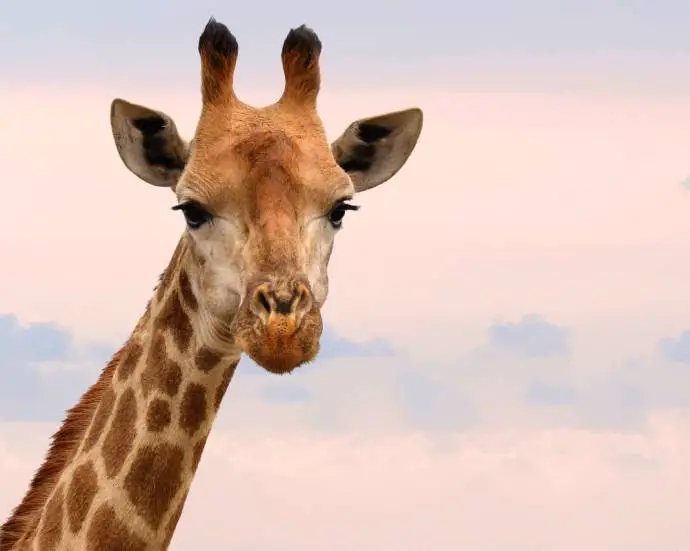Why do giraffes have spots?
Ali ste se kdaj vprašali, zakaj imajo žirafe lise?
Written by Sonja Merljak Zdovc, translated by JL Flanner.
Have you ever wondered why giraffes have spots?
Žirafe so najvišje živali na svetu. Njihova posebnost so dolgi vratovi, zaradi katerih lažje obirajo liste tudi na najbolj visokih vejah.
Giraffes are the tallest animals in the world. Their special feature is their long necks, which make it easier to harvest leaves on the highest branches.
Njihovo glavo krasita še mala rožička, mogočno telo pa je ozaljšano z lisami.
Their little heads are decorated with a small brown spots, and their magnificent bodies are covered with bigger [brown] leaves.
Znanstveniki so že ugotovili, da so te edinstvene in da se s starostjo ne spreminjajo. Čemu so namenjene, pa je bila skrivnost.
Scientists already knew that these are unique, and do not change with age. What they were meant for remained a mystery.
Skupina raziskovalcev pa je nedavno le odkrila, zakaj imajo žirafe lise.
A recent group of researchers just discovered why giraffes have spots.
Vodja skupine, Američan Derek E. Lee, je ameriškemu časopisu za otroke News-o-Matic zaupal, zakaj ga žirafe tako zanimajo: »Tudi sam sem bolj visok in zato so mi te živali blizu. Poleg tega so prav kul.«
Derek E. Lee, the head of the group, told the News-o-Matic newspaper for children why he was so interested in giraffes: "I am also very tall, and that's why these animals are close to me. Moreover, they are cool. "
Dodal je še, da so zelo ogrožene in da moramo zato izvedeti o njih vse, kar lahko.
He added that they are at extreme risk, and we should thus find out as much about them as we can.
Znanstveniki so proučevali lise na 31 parih žiraf. V vsakem paru sta bila mama in njen mladič. Osredotočili so se na velikost, obliko, barvo in še nekatere druge lastnosti lis. Ugotovili so, da mladiči določene vzorce podedujejo.
Scientists studied spots on 31 pairs of giraffes. Each pair included a mother and her child. They focused on the size, shape, color and some other features of the spots. They found that the children inherited certain patterns.
Štiri leta so proučevali tudi 258 žirafjih mladičev. Spoznali so, da imajo lise pomembno vlogo, saj mladičem pomagajo, da se skrijejo pred napadalci in tako preživijo. Tisti, ki so imeli večje in bolj raznolike lise, so lažje preživeli.
Two hundred and fift-eight young giraffes were also studied for four years. They learned that spots have an important role to play, helping the young ones to hide from predators and thus survive. Those who had bigger and more varied spots found it easier to survive.
Da žirafe lise najverjetneje podedujejo, je že pred petdesetimi leti odkrila znanstvenica Anne Innis Dagg iz Kanade.
That giraffes’ spots most probably inherited was discovered fifty years ago by the Canadian scientist Anne Innis Dagg.
Toda ona je opazovala le majhno skupino žiraf v živalskem vrtu. Derek E. Lee pa je opazoval precej večjo skupino žiraf, in to v divjini – v bližini mesta Arusha v Tanzaniji.
But she only watched a small group of giraffes in a zoo. Derek E. Lee observed a much larger group of giraffes, in the wild – near the city of Arusha in Tanzania.
Read more stories and improve your Slovene at Časoris.







